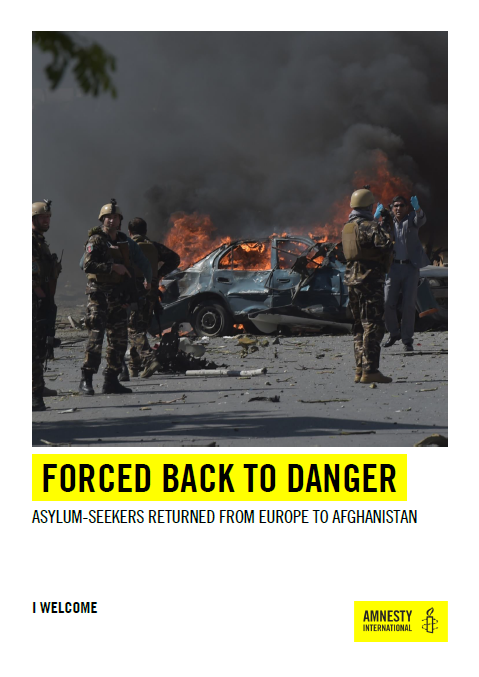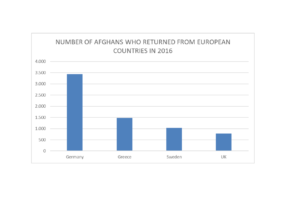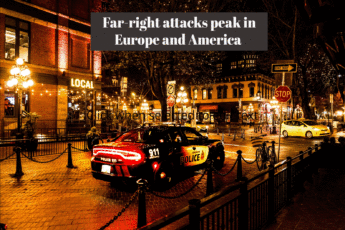
In 2016 the number of Afghans deportations from Europe rose nearly 300%. 2016 was also the year with the highest recorded number of civilian casualties in the country. The report published by Amnesty International on October 4th, 2017 named Forced Back To Danger, Asylum-Seekers Returned From Europe To Afghanistan examines this contradiction.
At present, given the grave security and human rights situation across the country, all returns to Afghanistan constitute refoulement*
According to the document, asylum-seekers whose applications were denied are obliged to return to their country, either through forced returns or the so-called Assisted Voluntary Return. Between 2015 and 2016 the number of Afghans who returned to Afghanistan increased from 3.290 to 9.460. In the chart below you can see the four countries from which most Afghans returned.
Afghanistan faces decades of conflicts and humanitarian crisis:
- In the first half of 2017, 94% of civilian casualties occurred in Kabul caused by suicide and complex attacks.
- 30 out of 34 provinces of Afghanistan are affected by forced displacement. The number of Internally Displaced People (IDPs) is approximately 2 million.
- 1.6 million Afghans are food insecure.
The report also points out that some people are at risk of persecution regardless of whether they are located in an area under effective control of Pro-Government Forces or Anti-Government Elements. The groups that are at particular risk of persecution include ethnic minorities, converted from Islam, individuals of diverse sexual orientations and/or gender identities, men of fighting age and children, as well as women and girls with certain profiles and at certain circumstances. Other human rights violations in Afghanistan are: torture and ill-treatment, as well as little access to socioeconomic rights, such as health services and education.
Despite all these conditions, the European Union has increased the number of denials to asylum-seekers. Last year, the EU negotiated with Afghanistan a return arrangement, the “Joint Way Forward on Migration Issues between Afghanistan and the EU” (Joint Way Forward). The agreement has been as a measure to pressure Afghanistan to accept large numbers of returnees.
The report states that many European governments resort to the concept of Internal Flight Alternative to deny asylum to Afghans, expecting they are going to move to a different location within the country. Forced Back to Danger also sheds light on the situation regarding the return of unaccompanied children and young adults that reached Europe as unaccompanied children since they face additional risks back in Afghanistan.
Why are people trying to escape from Afghanistan and what will they face returning to the country?
Ali Aziz, founder of the group Afghans Against Extremism, tells that following the violent conflicts and wars in which many civilians were killed and many people were displaced in the last decades, people have lived in conditions in which attacks and bombings are continuously taking place, communities have been invaded by military groups and people are vulnerable to different forms of violence:
The country has become a very chaotic place, causing people to look for an escape
Other problems returnees may face are poverty and starvation. Most of Afghanistan´s population live in rural communities and most of them are pretty much isolated.
A lot of these communities are either at the mercy of militant groups or facing poverty, so there is really not much to do except trying to find a better life
Seeking refuge elsewhere and trying to find work is a form to support family members left in the country.
Return to Afghanistan is either going to be a treat to their lives or they are just going to be stuck in poverty – Mr. Aziz emphasized.
*Non-refoulement is a principle of the international law that prevents asylum-seekers from being returned to countries where they are at risk of human rights violation.
The full report can be accessed here: https://www.amnestyusa.org/reports/forced-back-to-danger-asylum-seekers-returned-from-europe-to-afghanistan/
By Lais Carregosa (UFRJ)





